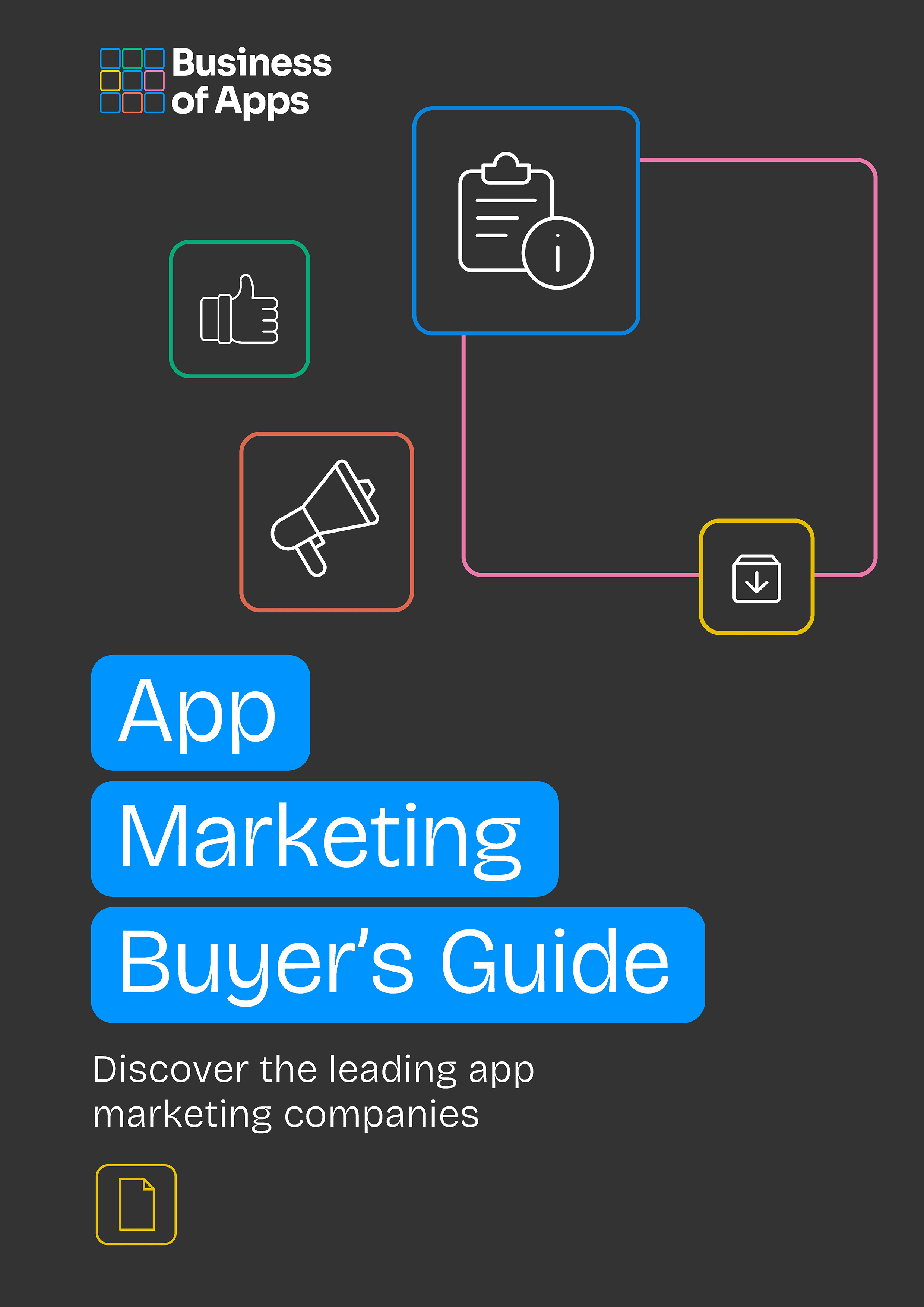It goes without saying that planning is essential for any business to succeed. When it comes to launching a mobile app project, app marketing strategies are crucial. Since the inception of Apple’s app store in 2008, mobile app marketers have built an extensive portfolio of strategies we want to discuss in this article, focusing on the ones that were proven to be effective.
Top App Marketing Companies
Broadly speaking, an app marketing strategy can be defined as a formalized set of actions to take to promote a mobile app, using a specific marketing channel(s). Any mobile app life cycle can be split into three stages – Pre-Launch, Launch and Post-Launch, the following strategies can be applied to more than one stage and so we begin with the ones that actually should be implemented first, and then cover the rest.
Unlock the App Store's Best-Kept Secrets
Wonder why some apps soar while others stall? We uncover your app’s potential, turning downloads into loyal and engaged users.
Claim Your FREE Growth Audit!Target market research
The essence of the target market research is getting a good understanding of who will be your app’s users, and where and how to reach them.
Apple’s App Store and Google Play marketplace from Google combined consist of around 3 million apps. Therefore doing target market research is the app marketing strategy that is absolutely essential to have a clear vision of the market you will be going to with the app.
The starting point for any market research is identifying your app user’s profile – that is to say to answer the questions like “who is this person?”, “what are her needs?”, “where do I find these people online to introduce them to my app?”.
App Marketing Buyer's Guide
Download our App Marketing Buyer’s Guide to learn how app marketing works, what mobile app marketers do, the best app marketing strategies, how much it costs, and, of course, the top mobile app marketing companies to hire for your app’s promotion.
Multiple industry research shows that people spend their time online, and with mobile in particular, to interact with other people via instant messaging apps, consume content on social media, search, shop, and navigate via maps. These activities should give you the landscape where you can identify places your potential users spend time.
Target market research questions to answer
The toolbox of app marketing instruments you have to reach your app’s users consists of techniques to drive native and paid traffic to the app. Once you identify where to find your potential users, you can also pick up specific tools from this toolbox.
The methods to conduct market research include conducting online surveys, identifying demand via social media, and collecting relevant data about the market using industry app data analytics leaders such s Dait.ai, Statista, SensorTower, Google Trends, and more.
Next up is identifying who will be your competitors on the market by conducting competitor research.
Competitor research
In conducting a competitor analysis, you need to address the following areas – the sources of funding of your app competitors, their business model, their users’ profile, top features, how much revenue was generated for the last 6-12 months, and overall marketing strategy.
Such research also involves conducting a SWOT analysis to identify weak and strong points of the app and building a business plan.
Again, analyzing your competitors, tools like SensorTower, App Annie, and App Radar will be essential. This is how you can assess their performance on the app store, get an estimate of how many downloads they may get, identify their ranking and track it over time.
Once both kinds of research are done, it’s time to proceed with establishing an online presence for the app.
Creating online presence
This app marketing strategy implies creating for a mobile app a dedicated website, a blog, and a number of accounts on social media such as Twitter, Instagram, YouTube, TikTok, Pinterest, and others. All these accounts should be visually consistent with the app’s brand.
The significance of such an online presence lies in the fact that both the App Store and Google Play provide only means for app distribution and selling but not customer management. To build relationships with the app’s users, app developers need dedicated channels. A website is the first in the line as a central hub to provide potential users with complete information about the app, provide support, and means for two-way communication via online forms, email, online support systems, instant messengers, and more.
The landing page for the app on its dedicated website should really present the app front and featured, unlike an app store, your app’s landing page gives you more real estate and capabilities to highlight the app’s features.
With social media accounts, app marketers can reach the app’s users in places where they spend the bulk of their time online. With videos on YouTube or Instagram, they can explain in depth the app’s features, provide how-tos, and so on, with TikTok videos they have a great channel to inspire their app’s users.
Transitioning to the next app marketing strategy that is essential for the app’s success – KPIs or Key Performance Indicators.
Setting up KPIs
During its life cycle, every mobile app accumulates a wealth of information about its performance on the market and how it’s been used by its users. It is absolutely essential to identify what KPIs to track for a mobile app and optimize its performance based on those KPIs. There is a number of well-established app analytics services that help app marketers to do just that.
The list of major Key Performance Indicators for a mobile app consists of the following: ROI (stands for Return On Investment) – a key financial indicator that tells you if a mobile app project is profitable or not, Retention Rate – this metric gives you the percentage of the app’s users who continue to use the app within one, seven or 30 days since the app was installed and launched for the first time.
Also, the list features the Churn Rate – the opposite of the Retention Rate, it shows you the percentage of people leaving the app, LTV (aka Life Time Value) – gives you the total value a particular app user has brought, MAUs, and DAUs – monthly and daily active users respectively, which are yet another important metrics to measure to analyze the dynamics of your app’s usage.
Mobile app major Key Performance Indicators (KPIs)
From an app store performance perspective, app marketers need to measure Impression to Page View rate, Impression to Install conversion rate and more of the App Store Optimization benchmarks.
Looking at how users interact with the app, the KPIs to measure are the average time people spend with the app on a daily/weekly/monthly basis, the number of interactions per day/week/month, as well as App Retention rate, measured the app’s users percentage that continues to use the app after 1,7 or 30 days since they’ve downloaded the app.
The thing to remember about KPIs is that it’s not feasible and non-practical to try to optimize the app to all possible KPIs to measure, app marketers, need to identify specific ones to focus on.
Visibility on the app store is absolutely essential for the mobile app to build a sustainable business. Search on the app stores drives 65-70% of all app installs and hence leveraging this channel is crucial and so the App Store Optimization (aka ASO) is next.
App Store Optimization
The App Store Optimization, aka ASO, is one of the fundamental app marketing strategies to apply to both the iTunes’ App Store and Google Play marketplace. It’s one of the oldest strategies devised by app marketers based on their previous experience of doing Search Engine Optimization for websites, over time it became clear that it is simply wrong to equate people’s experience of performing a web







